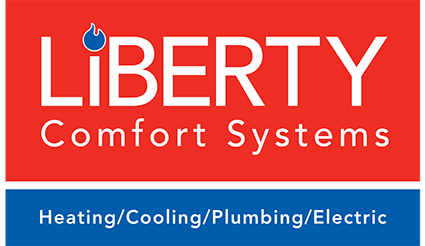
If you’re designing a new home or searching for an upgrade to your existing heating system, one option available to you is radiant heating. While there are several different types of heating systems you can have installed in your Anoka, MN home, radiant heating systems have several advantages that make this type of heating worth it. At Liberty Comfort Systems, we have the knowledge and skills required to install all types of radiant heating systems.
What Is Radiant Heating?
Radiant heating systems are designed to transfer heat through a room’s ceiling, floors, or walls. The warm air that’s emitted from these systems will rise and be distributed throughout the room via the convection process. These heating systems come with numerous benefits when compared to central heating systems, the primary of which is that radiant heating is considerably more energy-efficient. The holes and leaks that can develop in ductwork waste upwards of 20-30% of the conditioned air in central heating systems.
By wasting less energy, your utility bills may be lower once a radiant heating system has been installed. These systems are also discreet. There aren’t any air handlers, grilles, or vents that need to be installed in your home. Since radiant heating systems don’t come with compressors or fans, they benefit from quiet operation. Additional advantages of radiant heating include low maintenance requirements and no impact on indoor air quality.
Types of Radiant Heating Systems
The form that radiant heating takes depends on the type of system you purchase for your home.
Electric Radiant Floors
Electric radiant floors are comprised of electric heating cables that are placed directly into the floor. You can also purchase a version of this system that comes with electrical matting that’s mounted on your home’s subfloor.
Because of how much electricity can cost, these floors are only cost-effective if they are outfitted with a substantial thermal mass, which could be a concrete floor. You can also keep heating costs low if your utility company provides you with time-of-use rates. These rates give you the ability to charge the floor with heat throughout off-peak hours.
If the thermal mass is relatively large, the heat contained within should keep your home warm and comfortable for upwards of 8-10 hours. By taking this approach, you should save an ample sum of money since you won’t be heating the system at peak electric rates throughout the day.
Air-Heated Radiant Floors
Air is unable to hold a sizable amount of heat, which is why air-heated radiant floors aren’t used as often as the alternatives. You can boost the system’s efficiency by combining it with a solar air heating system. The main issue is that these units only produce heat during daytime hours.
Hydronic Radiant Floors
Hydronic systems are the most cost-effective and popular radiant heating systems you can have installed in your home. They are designed to pump heated water through tubing that’s positioned under the floor. The heated water is sent from a nearby boiler. Some of these systems are outfitted with pumps or zoning valves that control how the water flows through the tubes.
Radiant Heating Panels in Walls and Ceilings
Radiant heating is also available in the form of radiant panels that can be mounted to a wall or ceiling in your home. These panels are typically made from aluminum and are able to be heated with either tubes that carry hot water or electricity. The only issue with installing the water radiant heating system that uses tubing is that there’s a possibility of leaks in your walls or ceiling. Most of these radiant panels are electrically heated.
These panels are sometimes costly to operate but can deliver supplemental heating. They also have a quick response time when compared to other forms of heating technology. Since the panels are individually controlled with each corresponding room, the quick response functionality allows you to increase energy savings and reduce costs by not constantly heating rooms that aren’t being used.
When you enter a room that’s equipped with a radiant heating panel and turn the temperature setting up, you’ll be comfortable in just a few minutes. These radiant heating panels are most effective the closer you are to the panel.
Radiant Heating Systems Differ Based on Installation
Regardless of the type of radiant system you install, the installation process doesn’t differ too much.
Wet Radiant Heating Installations
Wet installations involve the tubing being embedded into a solid floor, the most common of which is a concrete foundation slab. If you use concrete and the floor isn’t on solid ground, additional support might be required because of the extra weight. We can help you determine the carrying capacity that your flooring material has.
Thick slabs of concrete are most effective for keeping heat stored when using a solar energy system. The main issue with thick slabs is that they have a slow response time, which means that any issues with heating them during the day or night could create problems when attempting to increase the temperature in your home.
Dry Radiant Heating Installations
Dry floors are ones that involve tubing or cables being placed in an air space below the floor. This form of installation for radiant heating is less expensive and quicker to build. However, the radiant heating system you use must run at higher temperatures since the air space will need to be heated. A small number of dry installations will involve suspending the cables or tubing beneath the subfloor. If you use this method, drilling may need to be done through your floor joists to make sure that the tubing is correctly installed.
These cables or tubes can also be installed between two separate sub-floor layers. In this scenario, liquid tubing will be fitted in aluminum diffusers that allow the heat from the water to be evenly spread across the floor. At the moment, sub-floor materials are being designed with aluminum diffuser plates and tubing grooves built directly into them. These products allow for half as much cabling or tubing to be used, which significantly improves the heat transfer process.
Our technicians can help you select and install a new radiant heating system for your home. If you’re unsure of which system you prefer, we’ll take a look at the design of your home before providing a recommendation. We offer installation services for every type of heating and cooling system around. If your current system is damaged and needs to be repaired, we’ll quickly identify the problem before providing you with a repair cost estimate.
Here at Liberty Comfort Systems, our team can also provide you with plumbing services like water heater repair, pipe repair, and water filtration installation. When looking into our services, consider requesting our electrical offerings, which include electrical repair, maintenance, installations, and inspections. A few extra services that our team can provide include new construction, basement finishing, and duct cleaning. Contact us today if you have any questions about radiant heating or would like to schedule service.

